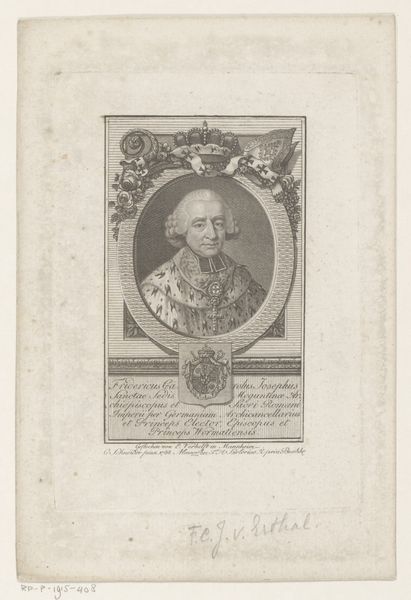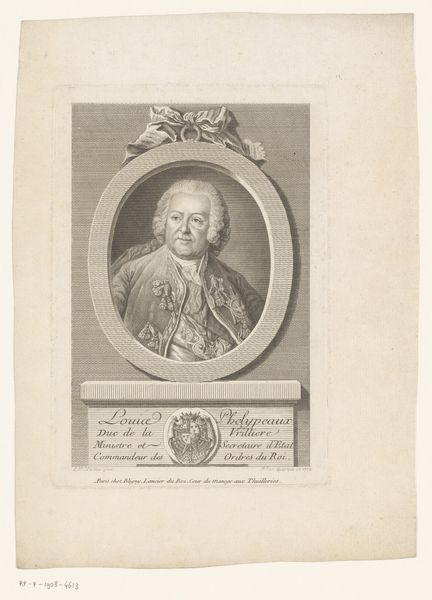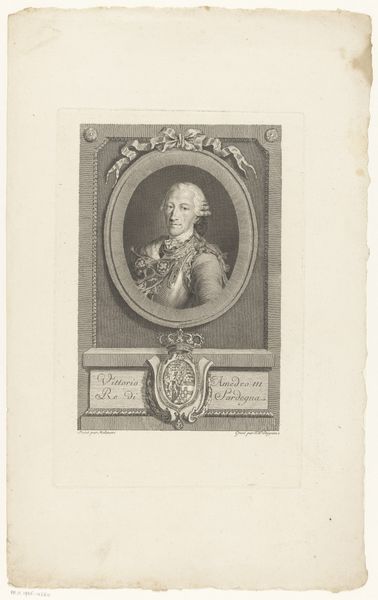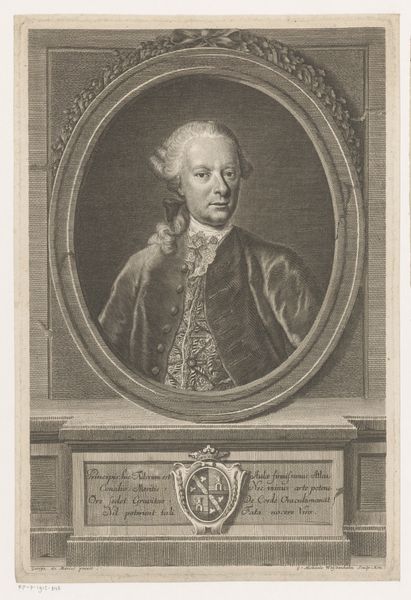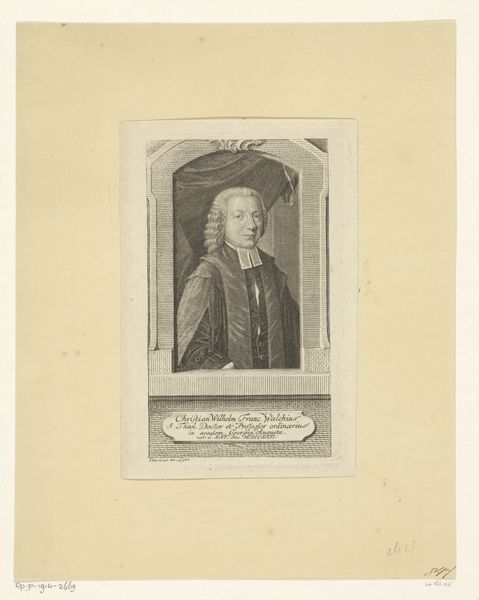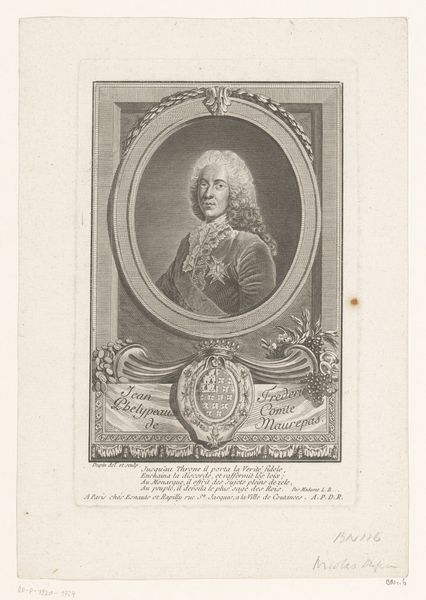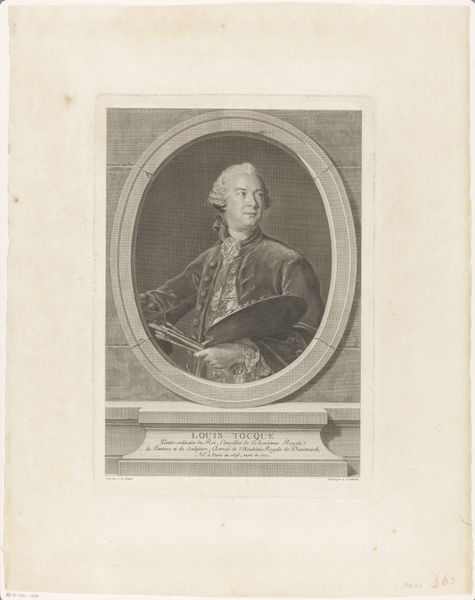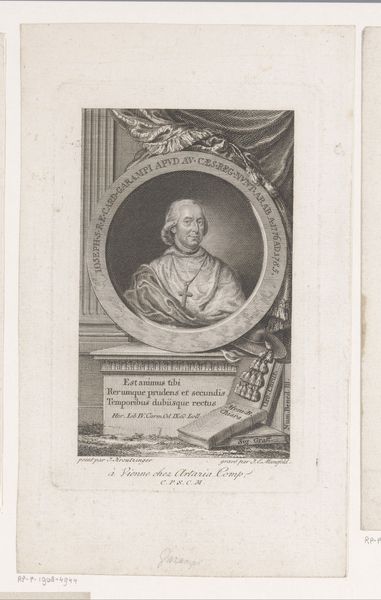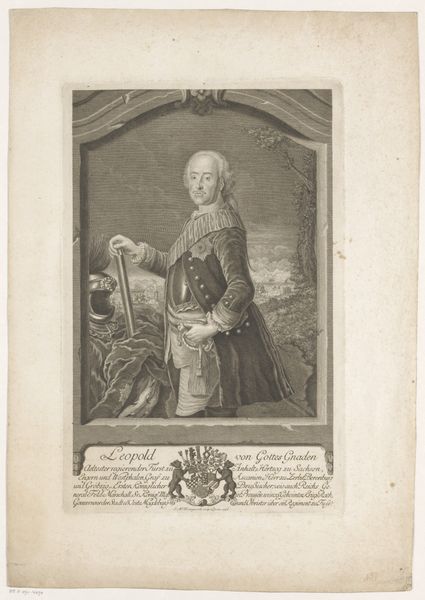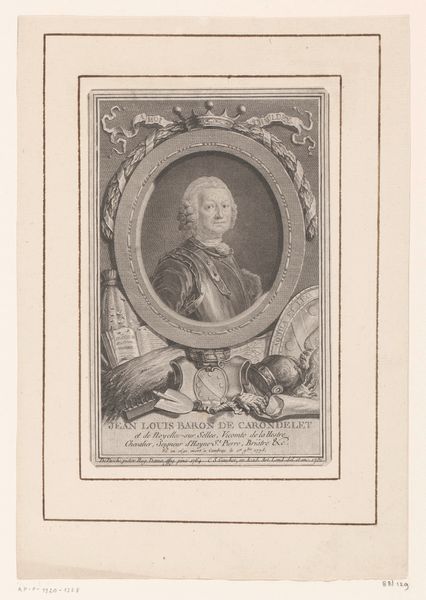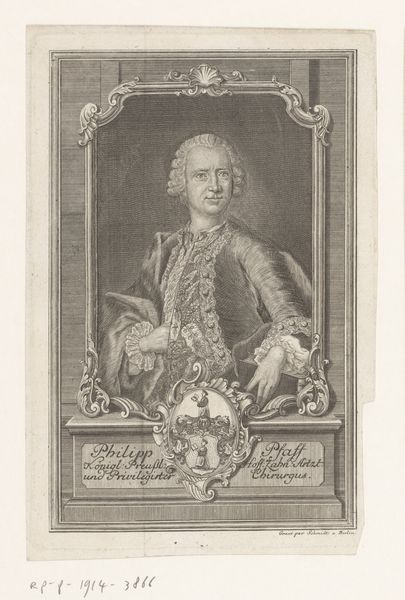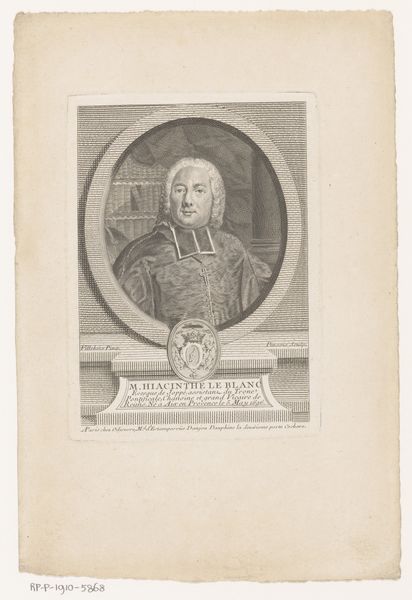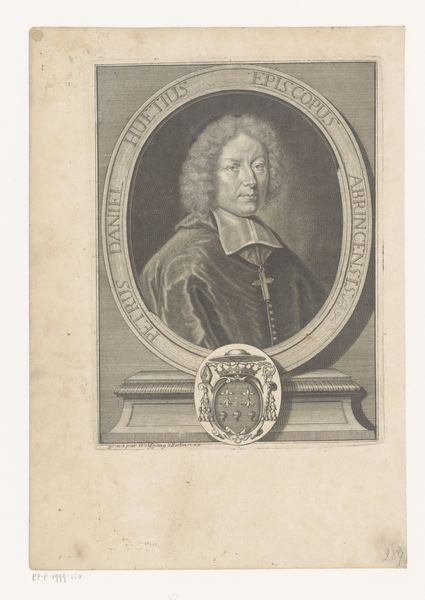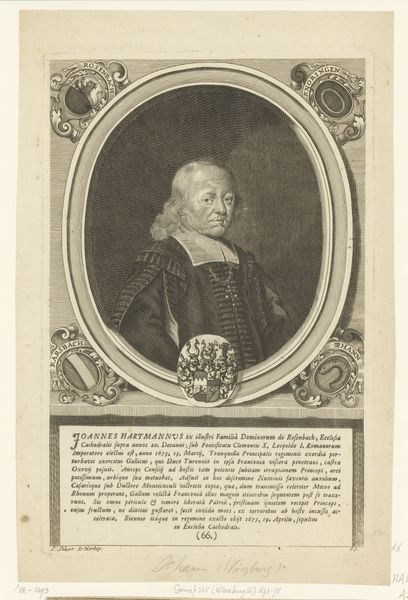
Dimensions: height 177 mm, width 133 mm
Copyright: Rijks Museum: Open Domain
Curator: Let's discuss this intriguing portrait: a print of Valentin, Freiherr von Schneidt dating roughly between 1765 and 1795. Editor: My initial impression is one of constrained formality; the sitter is framed within a very rigid structure. What statements are made in this Baroque portrait? Curator: Observe how the artist, Georg Michael Weissenhahn, uses the engraving technique to create fine details in the face, suggesting character. Consider, too, the deliberate construction of the oval frame. Note how the ribbons, flowers and heraldic symbols all work to enhance Schneidt's status. Editor: Absolutely, there's a clear emphasis on portraying power and lineage. It makes me consider the Church’s involvement in politics and aristocratic structures during this era, especially given Valentin’s religious standing that is referenced. Curator: Yes, the meticulous engraving does speak volumes about the subject’s rank. Beyond the social context, Weissenhahn has paid attention to contrasting light and shadow. See how that draws our attention to Schneidt’s features. Editor: And how might Valentin have seen himself within these socio-political tensions? Was he aware of the potential contradictions of representing pious values alongside elitist power? I'm struck by the performative aspect of this portrait. He must have consciously participated in how his identity was going to be memorialized. Curator: Certainly, this piece is a testament to Weissenhahn's mastery of Baroque visual rhetoric and printing and compositional balance. There is so much happening in this small area to appreciate formally. Editor: Looking at it this way encourages further engagement with questions of representation. Who gets their story told, and how are the sitters rendered and memorialized within societal constructs? This helps us to analyze and consider the ongoing presence and afterlives of inherited histories and the structures they once occupied. Curator: Indeed, it provides an illuminating point for considering questions around religious representation and also formal compositional mastery of Baroque-era printing practices. Editor: Exactly. Each view brings unique meaning and perspective, prompting ongoing dialogue with Schneidt's portrait across temporal contexts and socio-cultural boundaries.
Comments
No comments
Be the first to comment and join the conversation on the ultimate creative platform.
